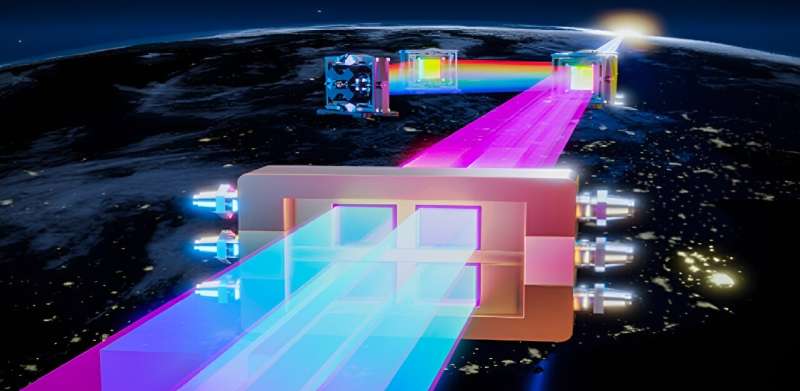This article has been reviewed according to Science X's editorial process and policies. Editors have highlighted the following attributes while ensuring the content's credibility:
fact-checked
trusted source
proofread
Breaking the 10-petawatt limit with a new laser amplification

Ultra-intense ultrashort lasers have a wide-ranging scope of applications, encompassing basic physics, national security, industrial service, and health care. In basic physics, such lasers have become a powerful tool for researching strong-field laser physics, especially for laser-driven radiation sources, laser particle acceleration, vacuum quantum electrodynamics, and more.
A dramatic increase in peak laser power, from the 1996 1-petawatt "Nova" to the 2017 10-petawatt "Shanghai Super-intense Ultrafast Laser Facility" (SULF) and the 2019 10-petawatt "Extreme Light Infrastructure—Nuclear Physics" (ELI-NP), is due to a shift in gain medium for large-aperture lasers (from neodymium-doped glass to titanium:sapphire crystal). That shift reduced the pulse duration of high-energy lasers from around 500 femtoseconds (fs) to around 25 fs.
However, the upper limit for titanium:sapphire ultra-intense ultrashort lasers appears to be 10-petawatt. Presently, for 10-petawatt to 100-petawatt development planning, researchers generally abandon the titanium:sapphire chirped pulse amplification technology, and turn to optical parametric chirped pulse amplification technology, based on deuterated potassium dihydrogen phosphate nonlinear crystals. That technology, due to its low pump-to-signal conversion efficiency and poor spatiotemporal-spectral-energy stability, will pose a great challenge for the realization and application of the future 10–100 petawatt lasers.
On the other hand, the titanium:sapphire chirped pulse amplification technology, as a mature technology that has successfully realized two 10-petawatt lasers in China and Europe, still has great potential for the next-stage development of ultra-intense ultrashort lasers.
Titanium:sapphire crystal is an energy-level-type broadband laser gain medium. The pump pulse is absorbed to build up a population inversion between the upper and lower energy levels, which completes the energy storage. When the signal pulse passes through the titanium:sapphire crystal several times, the stored energy is extracted for laser signal amplification. However, in transverse parasitic lasing, an amplified spontaneous emission noise along the crystal diameter consumes the stored energy and reduces the signal laser amplification.
Currently, the maximum aperture of titanium:sapphire crystals can only support 10-petawatt lasers. Even with larger titanium:sapphire crystals, laser amplification is still not possible because strong transverse parasitic lasing increases exponentially as the size of the titanium:sapphire crystals increases.
In response to this challenge, researchers have taken an innovative approach that involves coherently tiling multiple titanium:sapphire crystals together. As reported in Advanced Photonics Nexus, this method breaks through the current 10-petawatt limit on the titanium:sapphire ultra-intense ultrashort lasers, effectively increasing the aperture diameter of the entire tiled titanium:sapphire crystal and also truncating the transverse parasitic lasing within each tiling crystal.
Corresponding author Yuxin Leng of the Shanghai Institute of Optics and Fine Mechanics notes, "The tiled titanium:sapphire laser amplification was successfully demonstrated in our 100-terawatt (i.e., 0.1-petawatt) laser system. We achieved near-ideal laser amplification using this technology, including high conversion efficiencies, stable energies, broadband spectra, short pulses, and small focal spots."
Leng's team reports that coherently tiled titanium:sapphire laser amplification provides a relatively easy and inexpensive way to surpass the current 10-petawatt limit.
"By adding a 2×2 coherently tiled titanium:sapphire high-energy laser amplifier in China's SULF or EU's ELI-NP, the current 10-petawatt can be further increased to 40-petawatt and the focused peak intensity can be increased by nearly 10 times or more," says Leng.
The method promises to enhance the experimental capability of ultra-intense ultrashort lasers for strong-field laser physics.
More information: Yanqi Liu et al, Coherently tiled Ti:sapphire laser amplification: a way to break the 10 petawatt limit on current ultraintense lasers, Advanced Photonics Nexus (2023). DOI: 10.1117/1.APN.2.6.066009
Provided by SPIE




















